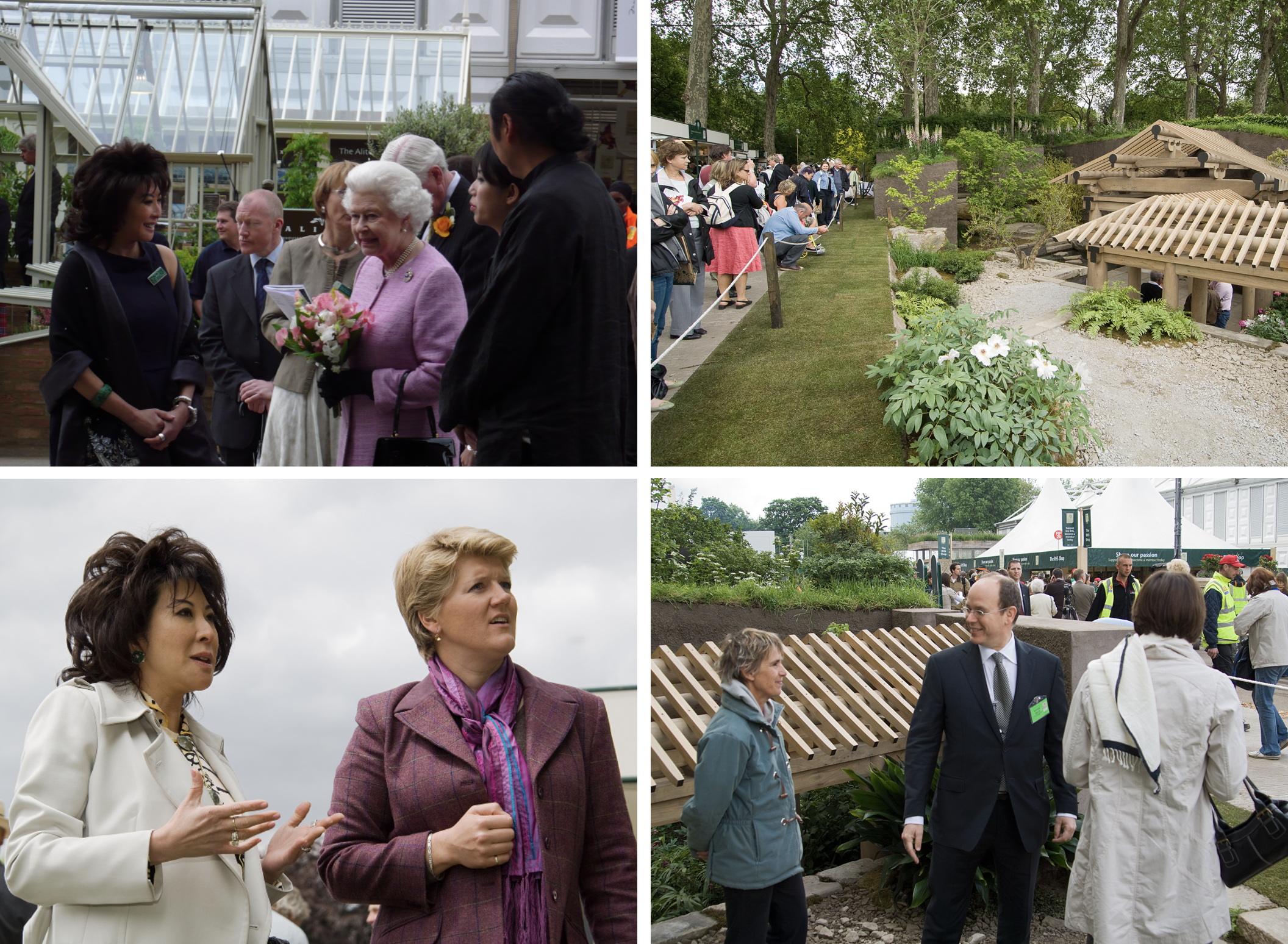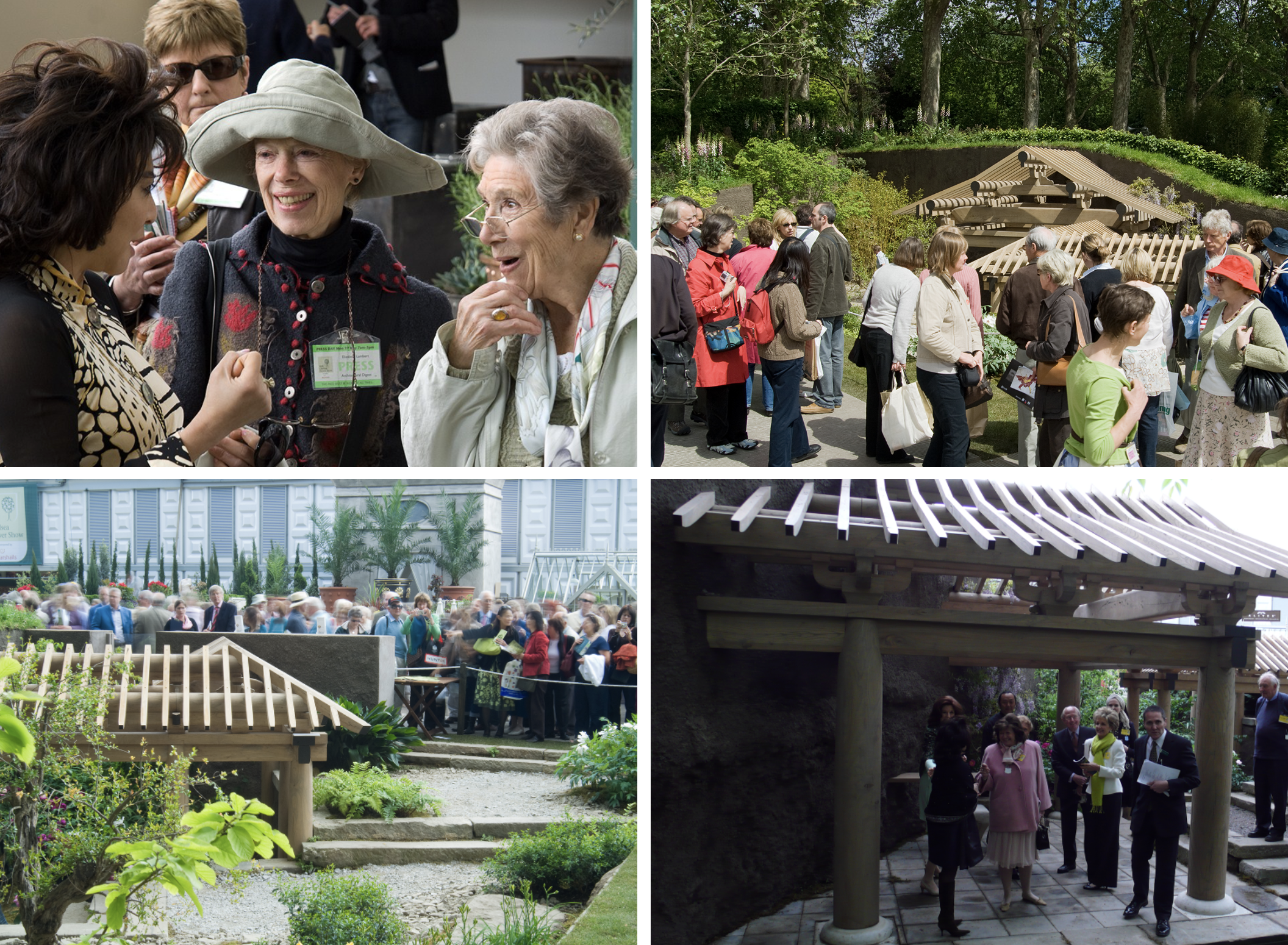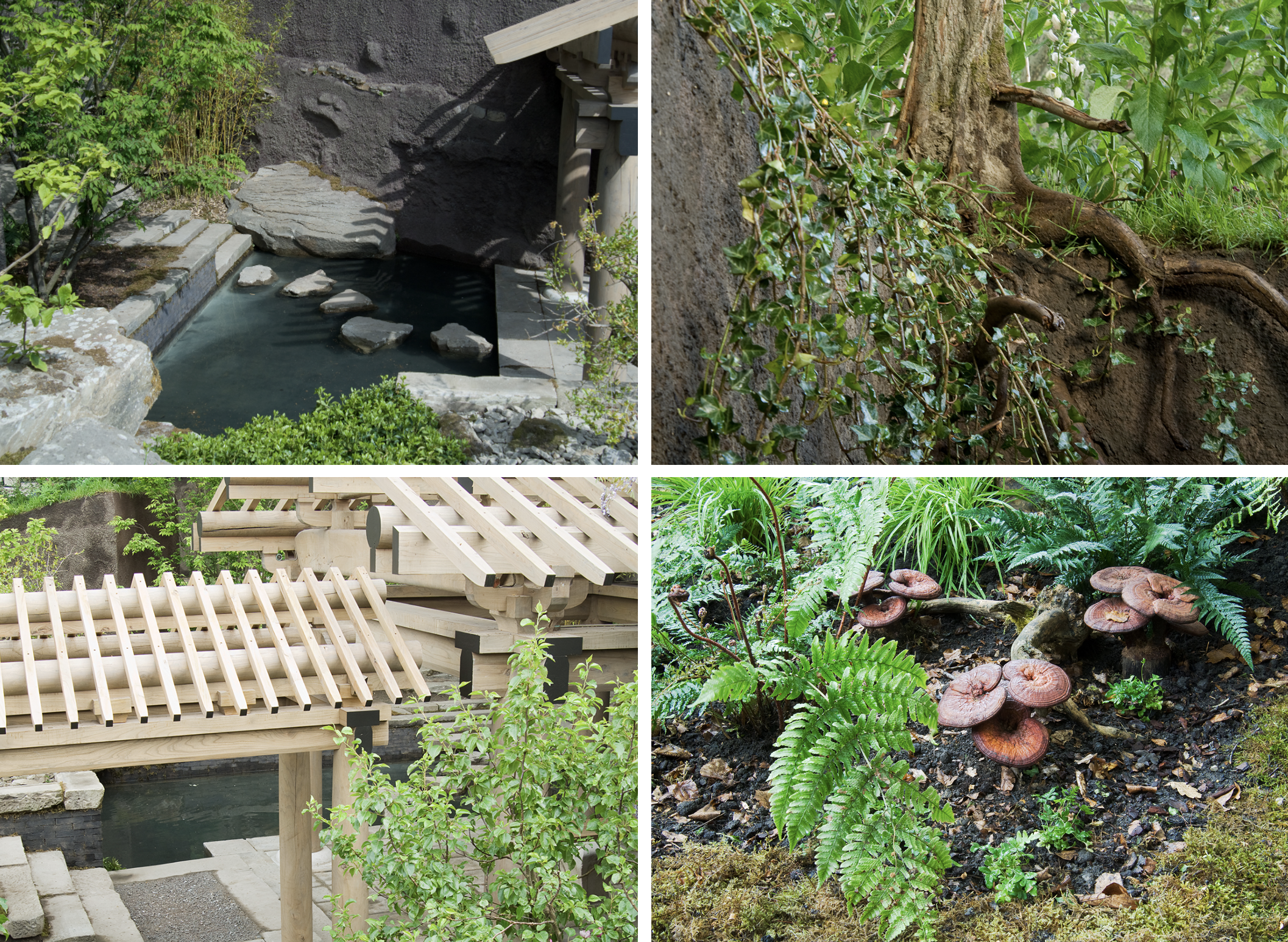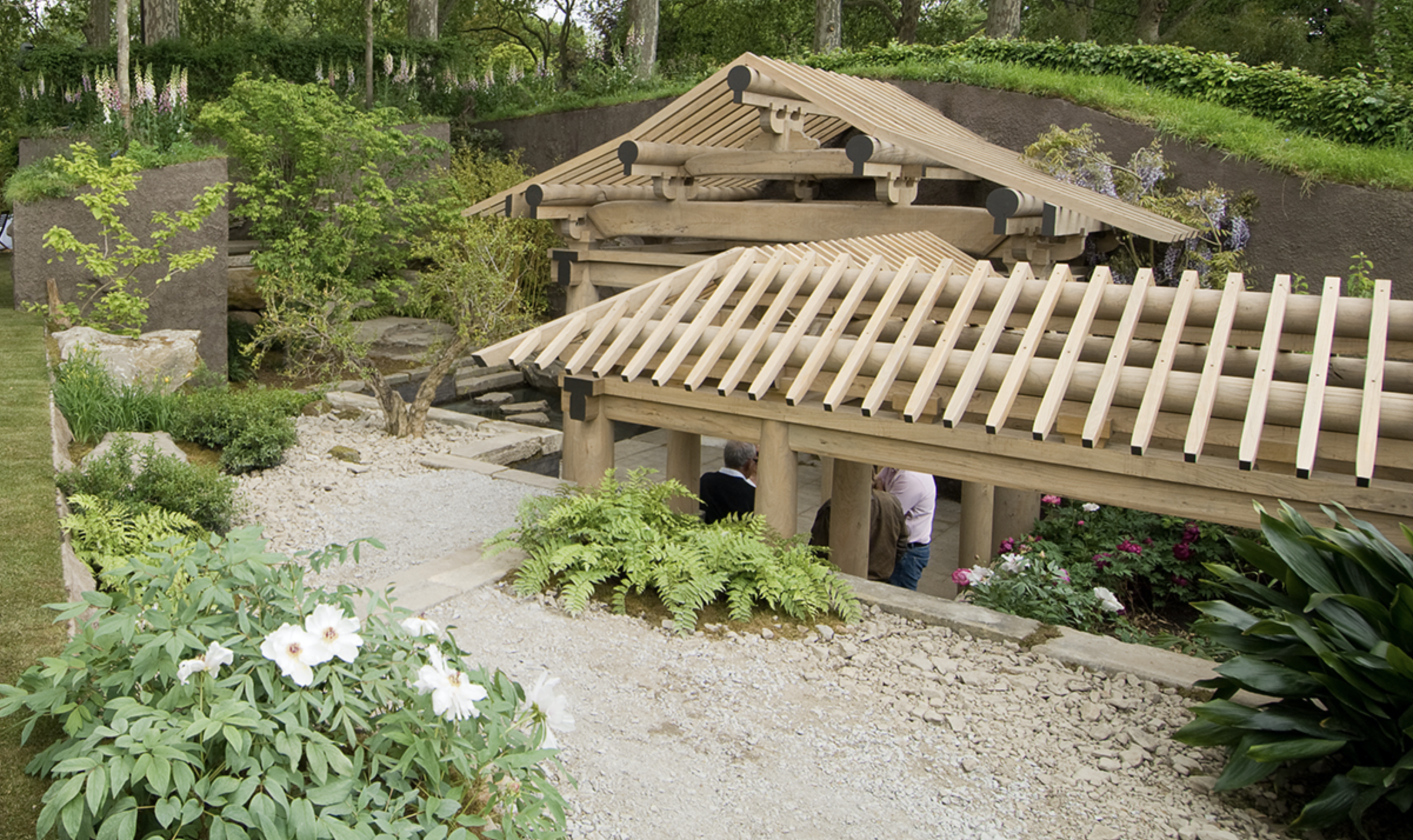

The Gold Medal winning Chelsea Garden created in 2008 by Shao Fan, under the guidance and support of Lady Linda Wong – Davies was conceived not only as a garden, but also as a spiritual and philosophical statement. Part art installation, part metaphor, but all expressed through the art of garden making – a skill well known and highly developed by the Chinese over many centuries. It was inspired by the imperial Song dynasty, but with a contemporary sensibility.
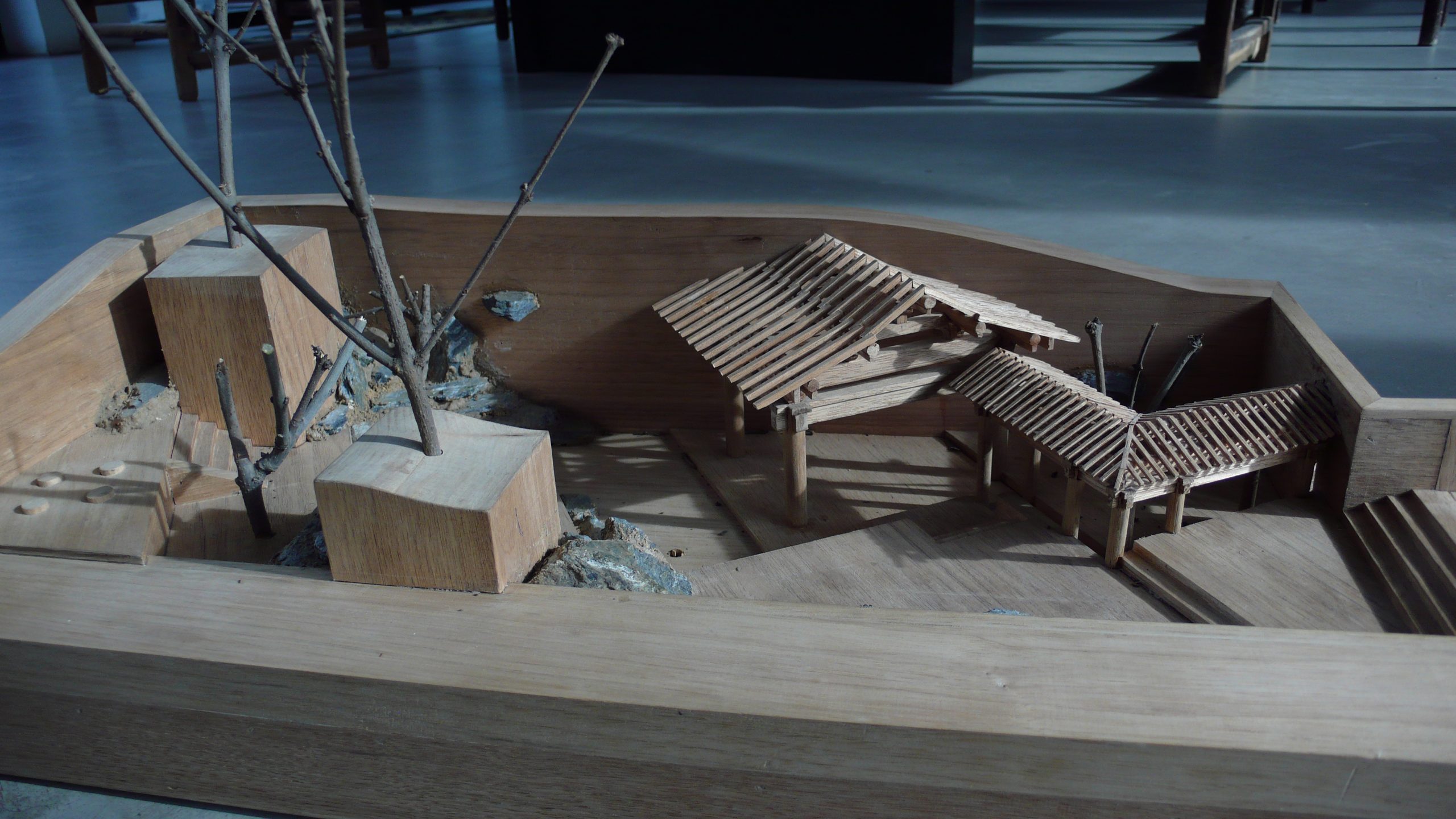
As an examination of the thinking behind the project by Shao Fan – the elm wood (reclaimed from original Chinese buildings), is regarded as holding the spirit that their forebears inhabited. These pieces hold a deep history which is relevant in their repurpose. Chinese gardens are designed to be ‘read’, literally and metaphorically. However, unlike Japanese gardens which are designed to merely be admired, Chinese gardens are designed to be entered, often as a spiritual refuge. Many of the great gardens of China were created during turbulent times in history for this very purpose.
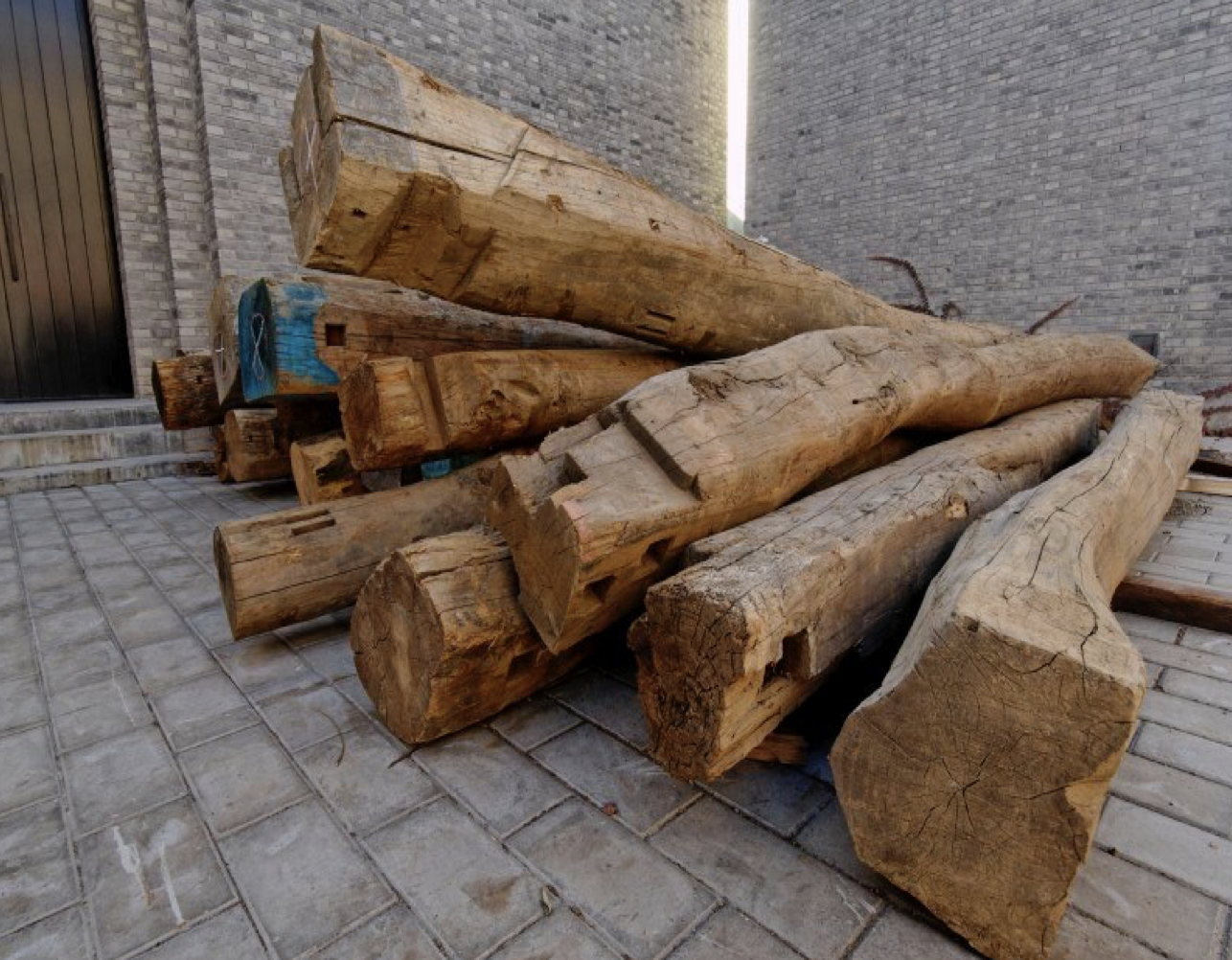
However, the meaning in Chinese gardens is often metaphoric or implied. Allusion, to existential aspects of life beyond the garden, is a key aspect and is deeply reflected in the build and design. This garden by Shao Fan is an exploration of how Chinese gardens, in particular urban Scholar’s Gardens, maximise a sense of space through a sophisticated use of perspective.

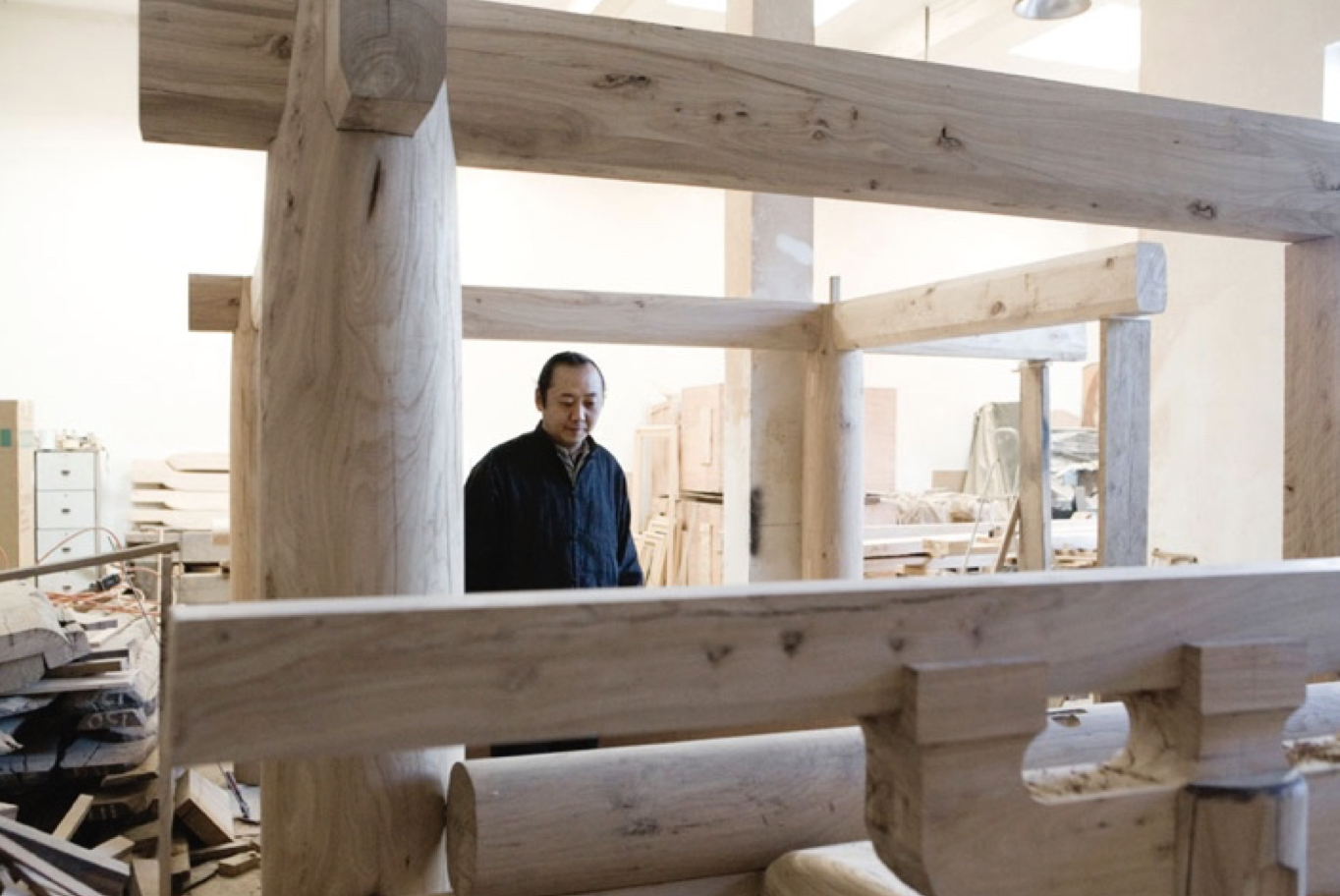
They are known as “Scholar’s Gardens because they were made by members of the elite scholar class – high ranking government administrators and teachers.
The southern city of Suzhou is particularly famous for them and has become a focus for both Chinese and foreign tourism. Oases for introspection and contemplation – a clear parallel with the west where creative self-expression is all. But Chinese garden-making is not just about relaxation, it’s also a cultivation of one’s inner world, a morally improving activity complementary to working life. Gardening makes you a better person.
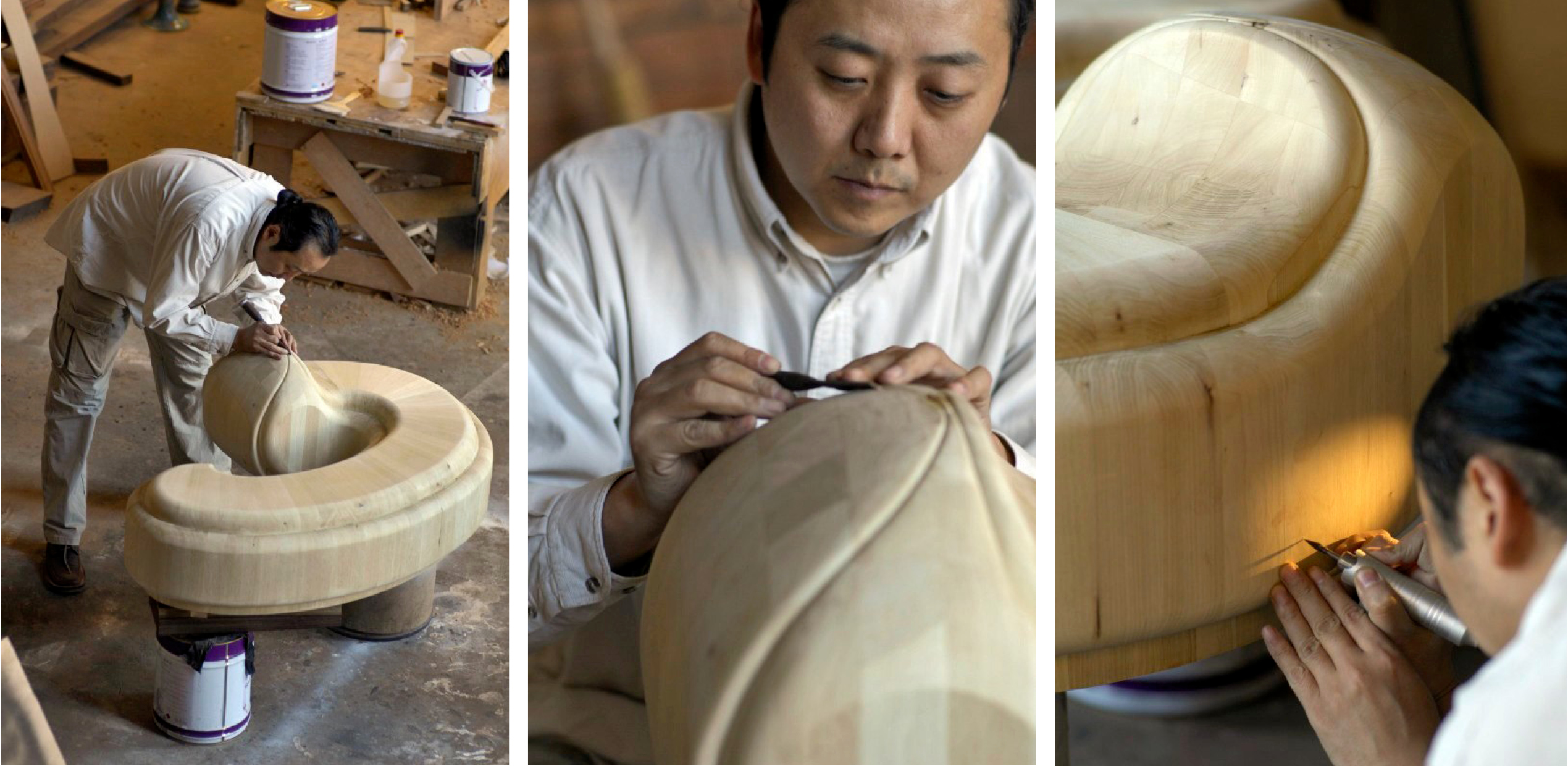
The landscaping of the garden – its rocks and sweeping walls – articulates the relationship between the disciplines of Chinese landscape painting, architecture and sculpture.
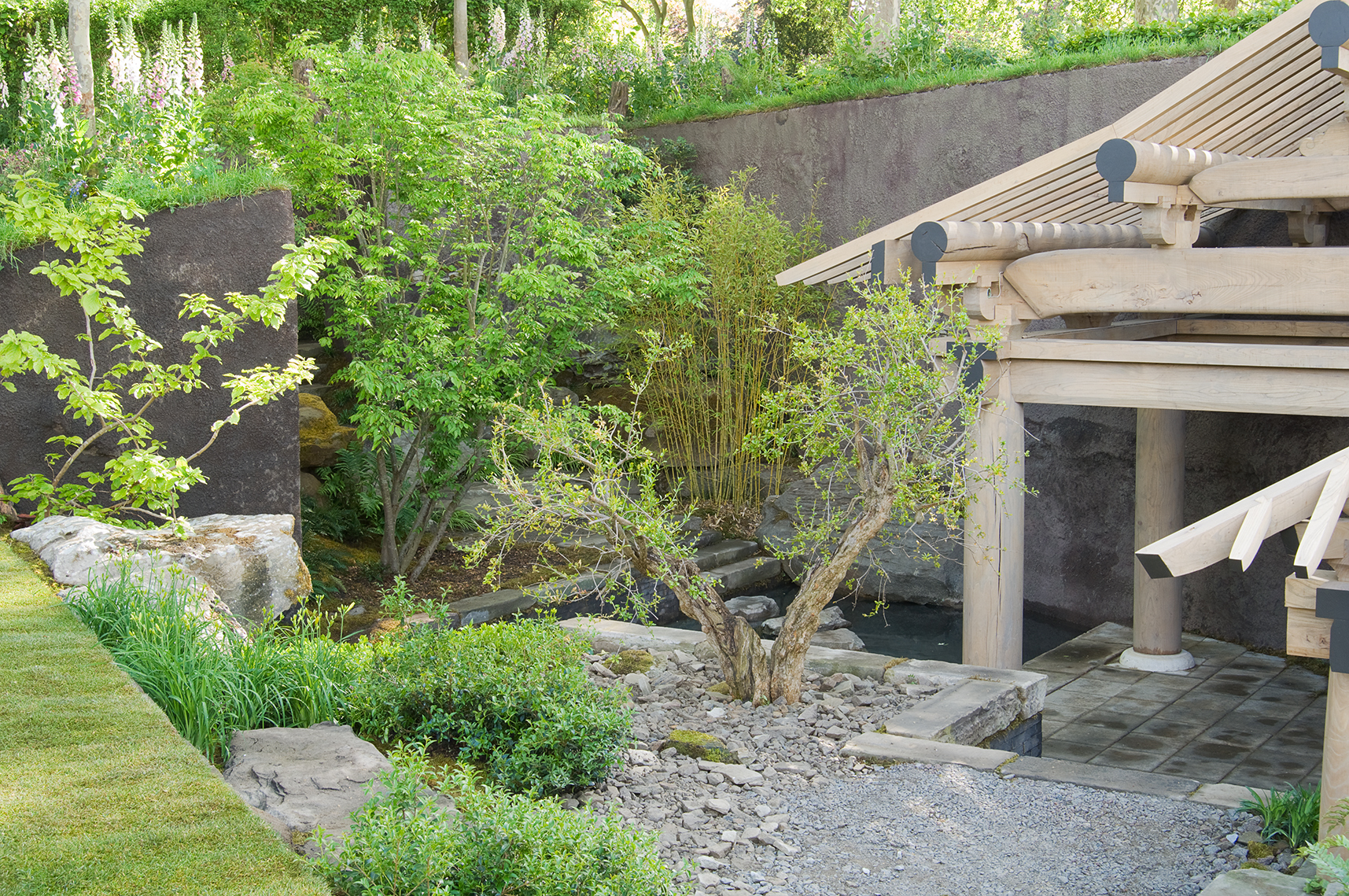
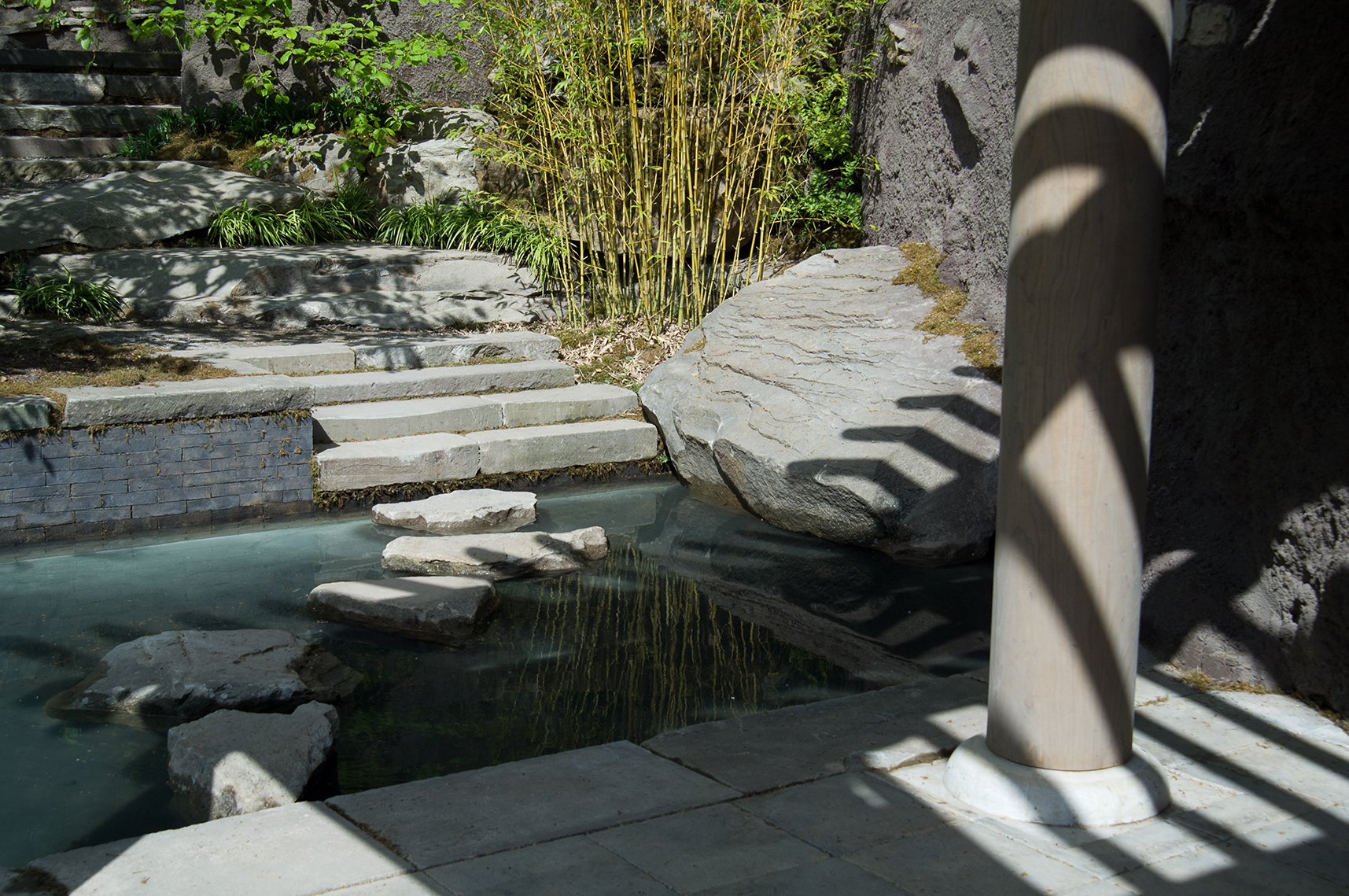
Rocks are seen as symbolic of benevolence and antiquity, and evoke the solitude of mountains as seen in all the great landscape paintings of late seventeenth-century China. The great mountain, towering above lesser mountains, trees, and men, was like “a ruler among his subjects, a master among servants.”
The immaculate preservation of the sunken Chinese garden introduces elements of the surreal and the uncanny – the tools by which Shao Fan negotiates the complex position of Chinese culture today. The garden uses very high walls to close itself off from the outside world acting, in Lady Linda Wong- Davies words as “an allegory of China today” reminding us of our cultural heart at a time when we are rushing into modernity.
A Chinese pavilion rising up in a lost English garden. An unambiguous reference to the emerging cultural and economic importance of China today.
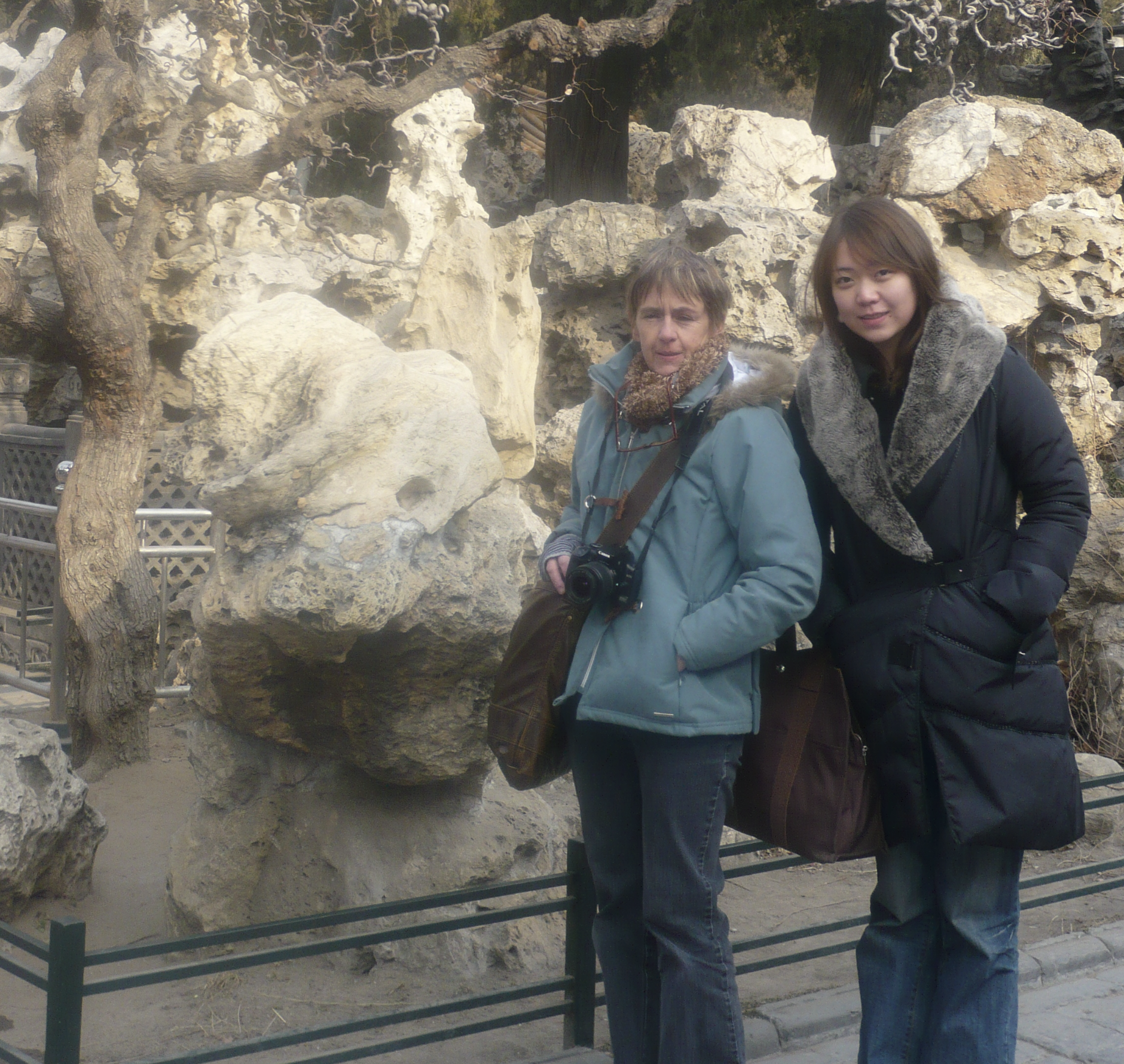
At the same time the installation can be read in a very different manner. In Shao Fan’s opinion (in 2008), Western influence is influencing Chinese culture and values. The pavilion can be seen as a symbol of a disappearing Chinese culture, slowly sinking beneath the soil of a western garden. The traditional Scholar’s Garden – conceived of as a retreat from worldly temptations – becomes in this context a vehicle for the expression of deep concern. 1000 years of the history of the Chinese garden is alluded to by his design. The intent is that as you enter, you go back through time.
The viewer is confronted with what appears to be an abandoned archaeological dig, in which the Scholar’s Garden sits among walls of earth, through which the roots of trees grow. The illusion is completed by the English trees and grass which can be seen beyond, and invite the viewer with the familial; foxgloves and bluebells.
However, by entering the garden you enter China and the experience of the garden is akin to a journey both in the design sense, but also as one of philosophical contemplation. Comparisons can be made with gardens in the western tradition which use similar approaches. They transport the viewer to a better world on many levels.

Building the temple at the heart of this garden required teamwork and the ability to work across time zones with a multi-national team The designers first flew into Beijing to work with Shao Fan and his wife Anna, and understand the thinking, philosophy and historical connection for a contemporary Chinese garden in the World-renowned, glamorous and most quintessentially British setting. From Chelsea, the KT Wong Foundation enlisted the help of Sarah Eberle, a multiple gold winning garden designer, notable plants woman, and designer with the skills and ability to navigate the rules and regulations of the Royal Horticultural Society. All of this produced and managed by Lady Linda Wong-Davies, Chairwoman of the KT Wong Foundation.
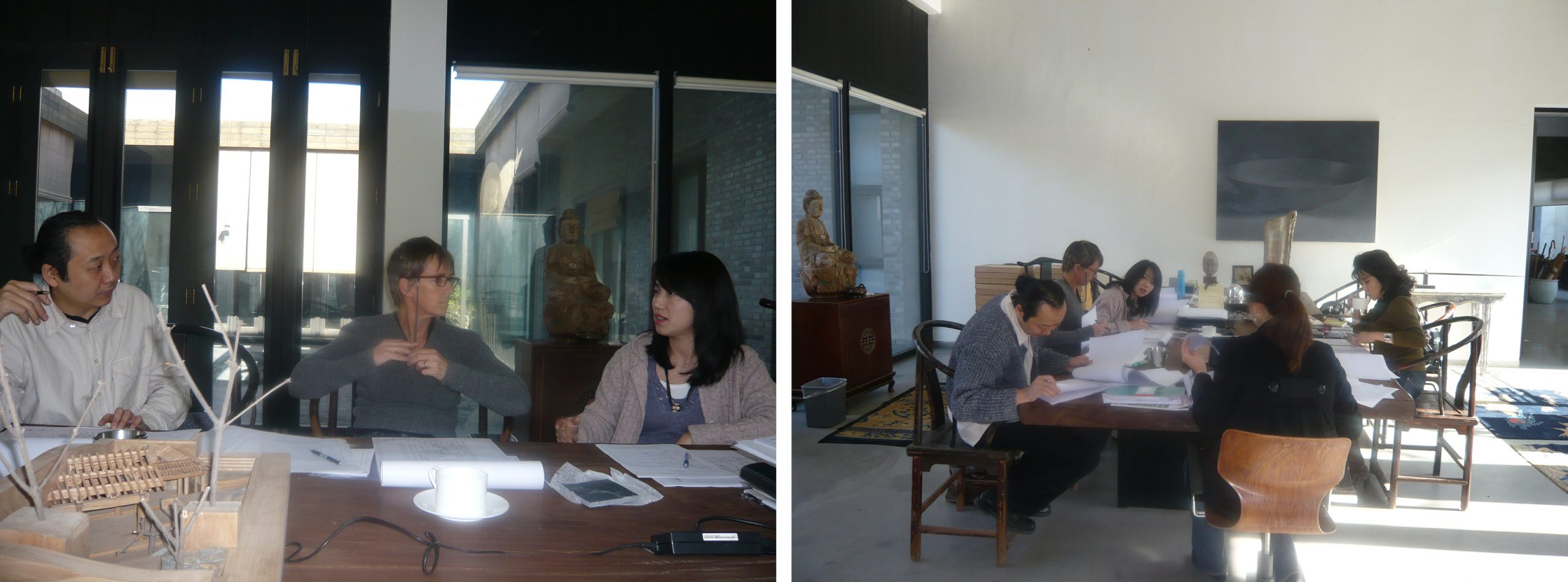
The efforts of many craftsmen with a focus on the ancient carving skills were required with each piece, carved from 200 year old elmwood, collected from original temples and historic houses and slotted together without nails. A convergence of precision, artistry and engineering.
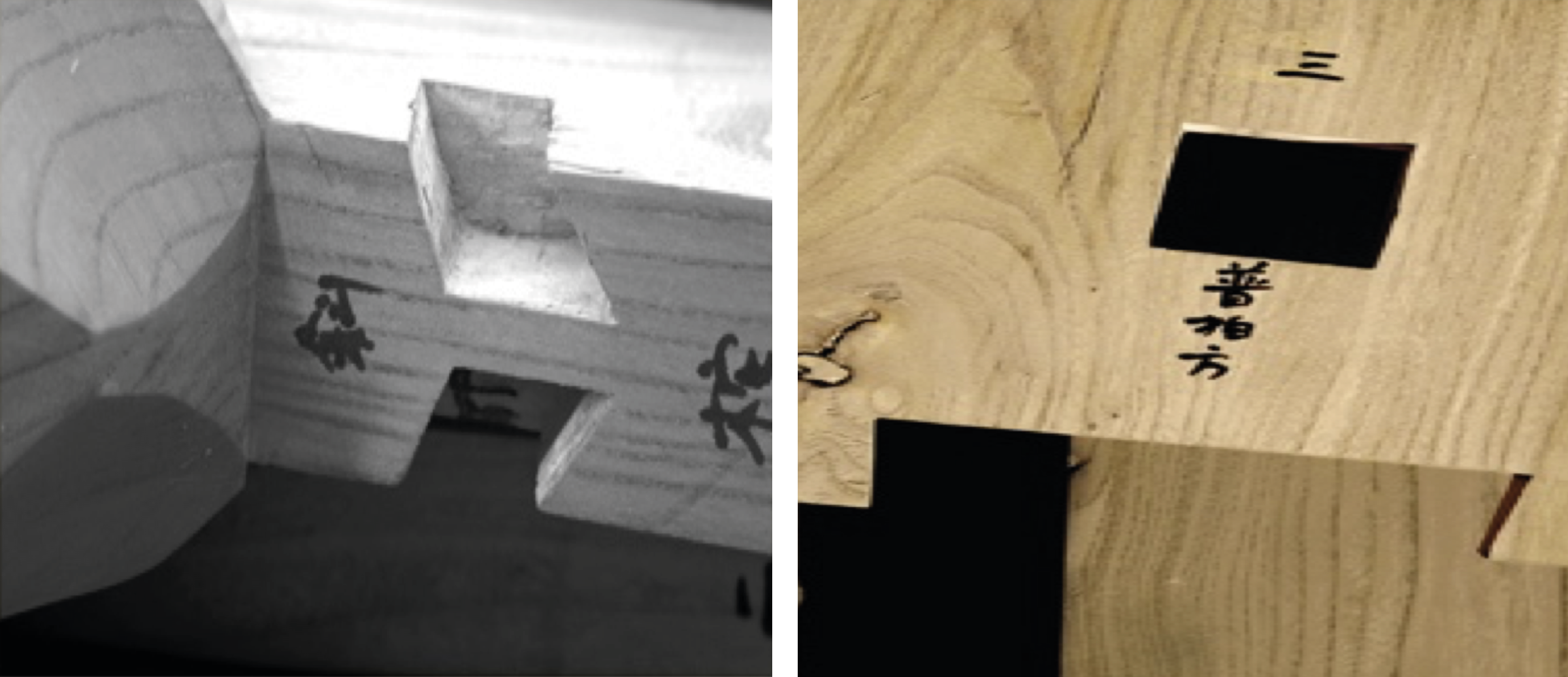
The hand selected and crafted pieces are then painstakingly assembled to form the final construction. The elements bearing the hand carved Chinese characters of both the artist and its precise position within the final construction.
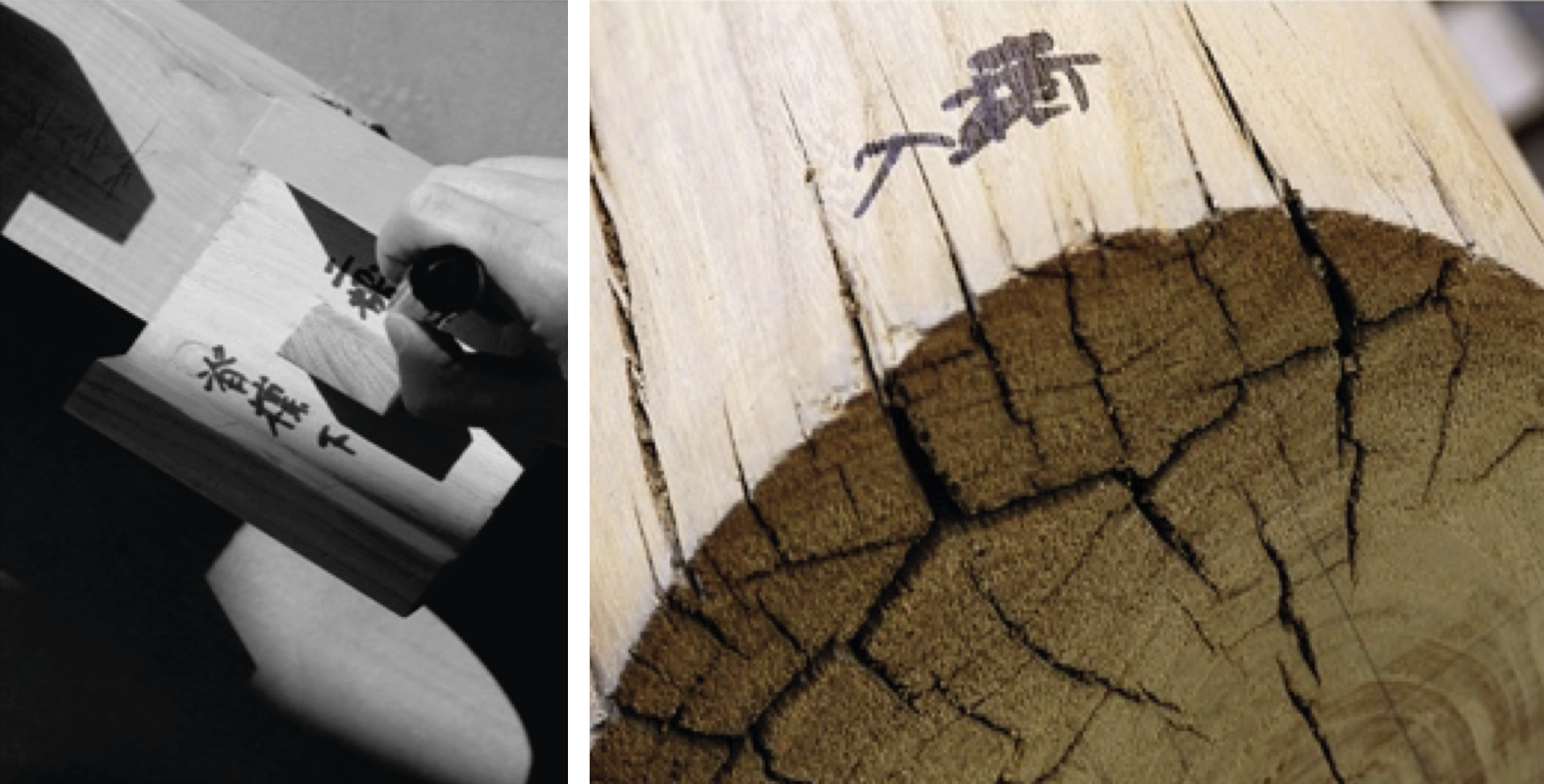
In the selection of wood – it’s important to note that when a Chinese person looks at a tree he is not interested in the uniformity and straight lines that attract the western eye. Instead he looks for the interesting contours, with twists, turns and knots, representing the struggles and trials the tree has endured through its long life.
Workshop in the Studio of Shao Fan (Beijing)
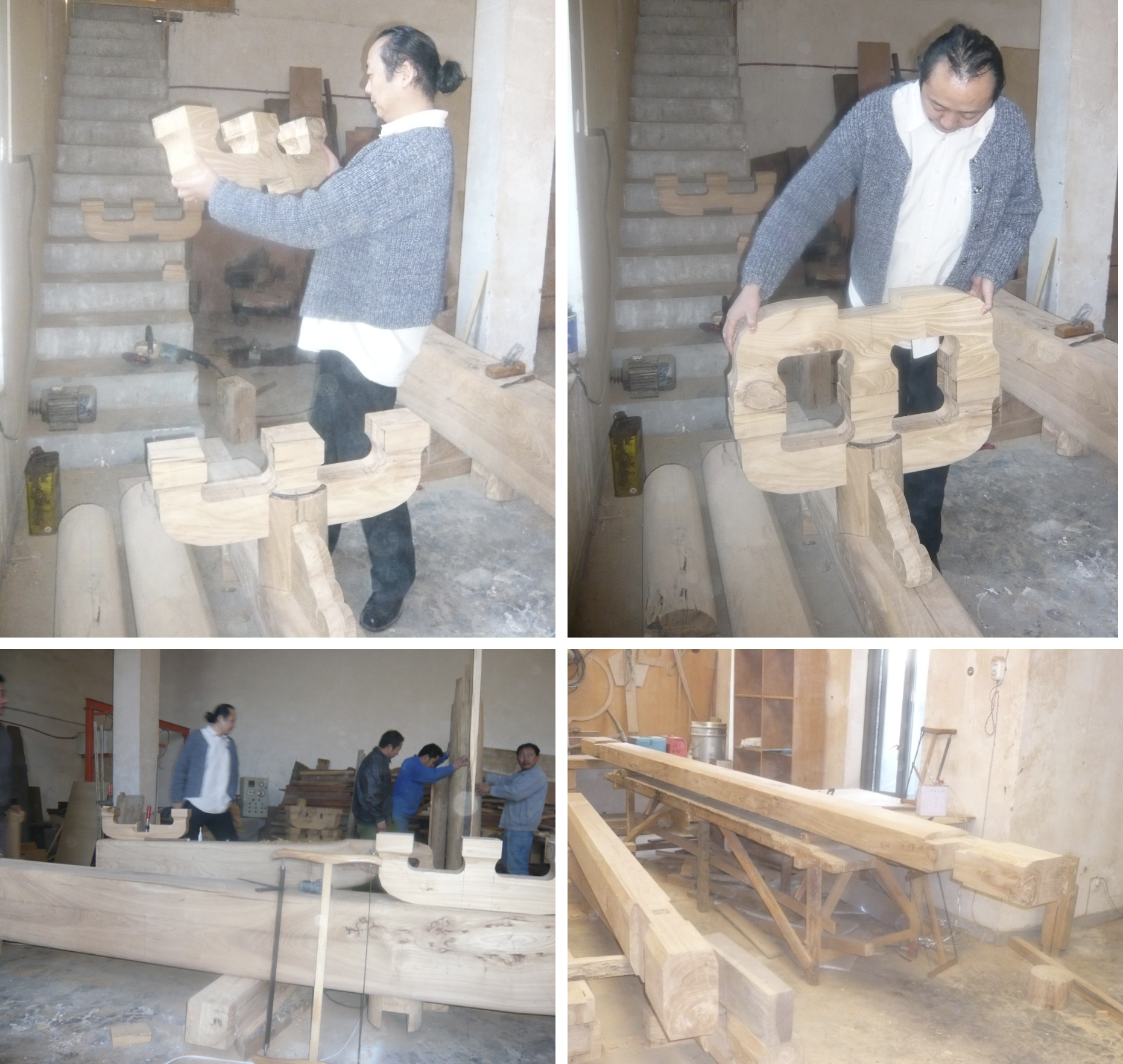
The Pavilion built at Shao Fan’s home courtyard especially for Lady Wong-Davies.
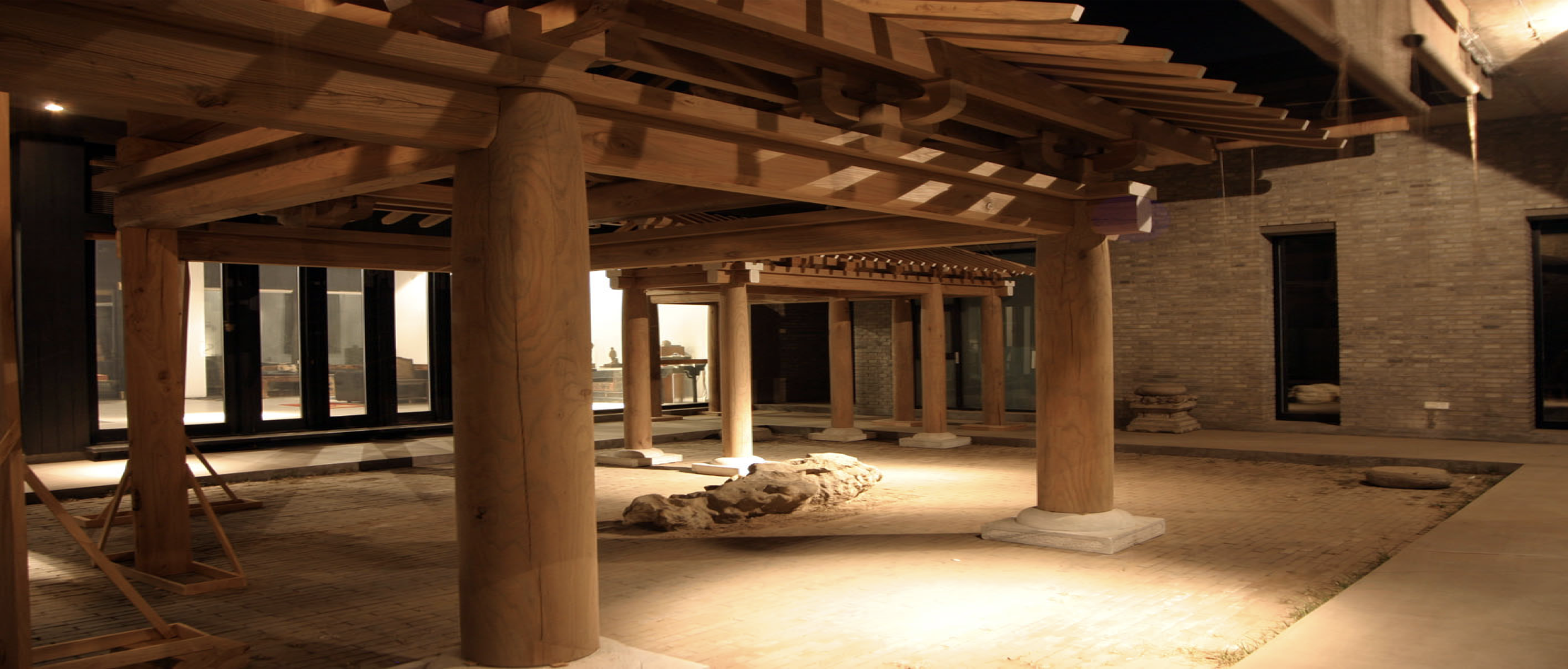

The hunt began for the right plants and trees that would reflect a contemporary Chinese Scholar’s Garden and combine that with traditional plans, trees and flowers found in a normal English garden. Flowers and trees selected all came from China and all carry symbolism and importance. This was used to emphase how Chinese view gardens as a haven of peace.

There is a history of borrowing ideas in garden making, particularly from China and Japan. Themes include exoticism, kitsch, iconic garden structures and plants, with an interest in eastern philosophies, permission to break rules, and the foreign idea as cover for innovation. However, the garden avoids all stereotypes of what Chinese gardens should look like. The most famous of these (and much copied) are in Suzhou, however this design is intended to create something more contemporary and representative of many ideas brought together by Shao Fan as an art installation.
Many flowers used are now very well known to English gardens. The project draws attention to the long history going back to the 17th century of botanists, explorers and plant-hunters who made expeditions to then remote parts of botanically rich China in the name of science to discover and bring back plants and propagate them in the gardens of large British country estates, thus making them much loved features of English gardens and known to the entire British public.
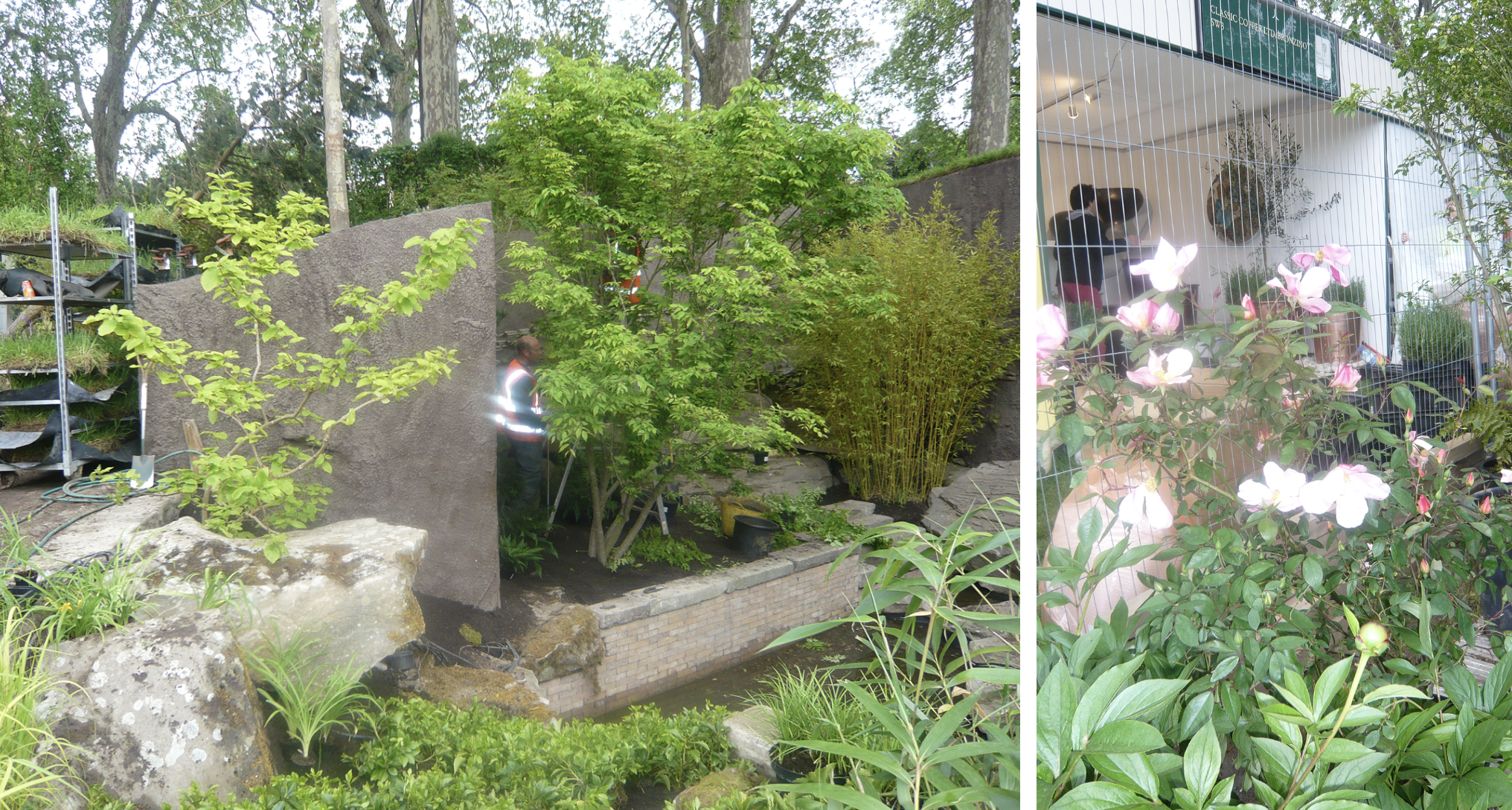
To the viewer (largely western garden makers) the intention is to communicate the underlying spirit of the Chinese garden style rather than to copy its outward forms. Examples of western gardens which include elements illustrating Chinese design philosophy are therefore included, even though they may not be self-consciously Chinese-style gardens. These plants reflect the pure qualities of the retreat, and have also been chosen for their medicinal properties and cultural symbolism. Each plant bears a significant symbolism, with peonies perhaps the most important as the national flower of China. These peonies were selected after an exhaustive search within China to answer both these aspects.
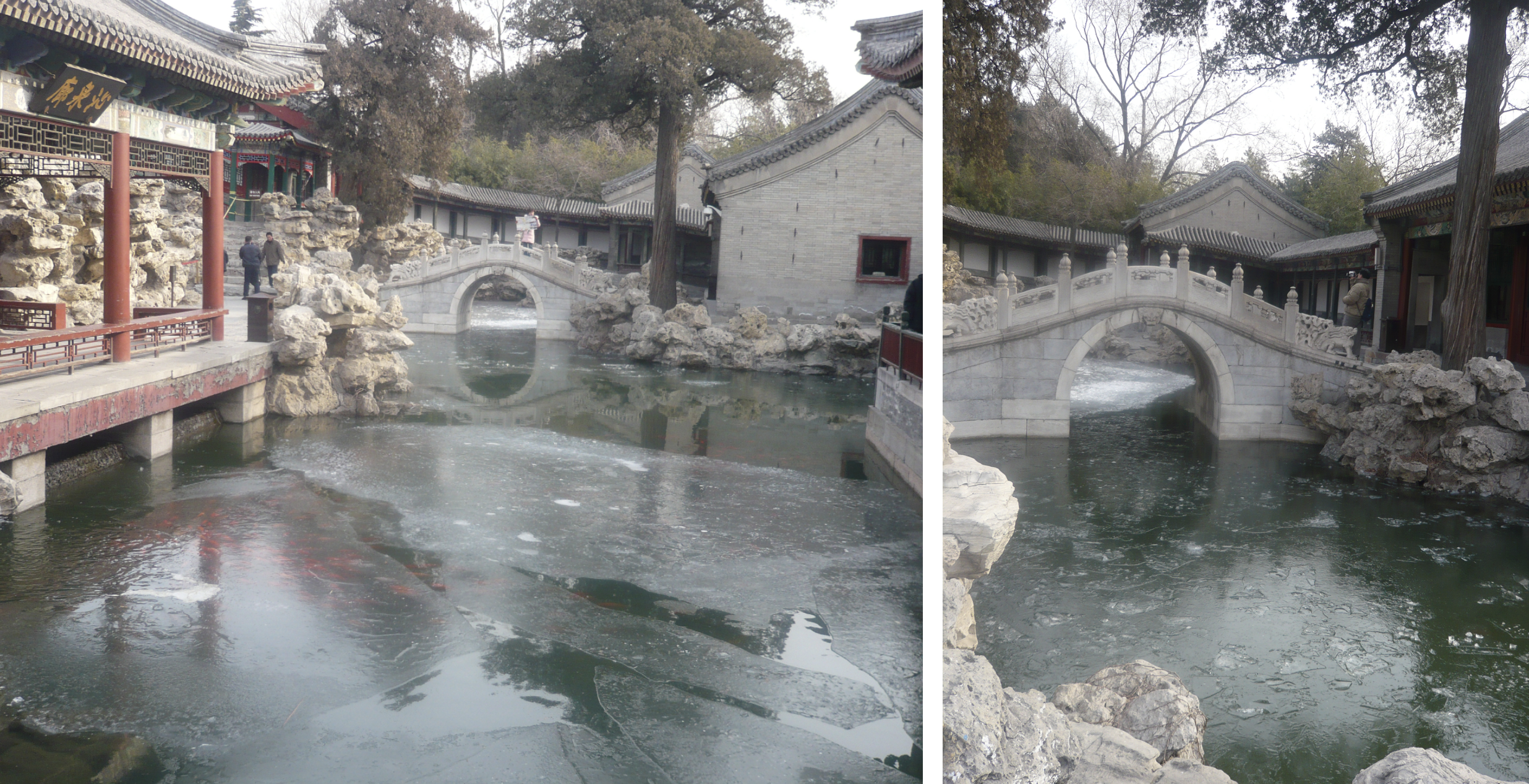
And finally rocks which are seen as symbolic of benevolence and antiquity were introduced to the design to evoke the solitude of mountains which combine with the water and the walls to bring a coherence to the finished garden. The use of water can be seen in many classical designs and is a critical element.

The Blessing
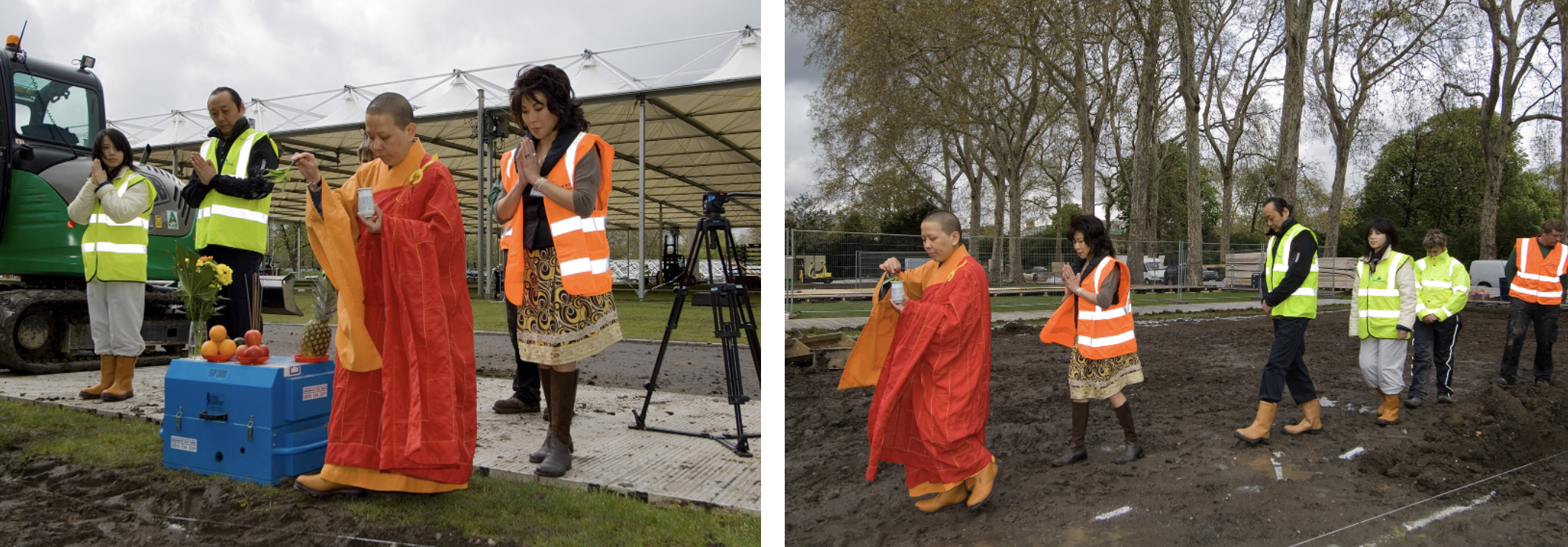
The Chinese believe that with any start or initiation of a significant project, a blessing ceremony must be carried out beforehand. And so it was with “I Dream, I Seek My Garden” – the leading Buddhist Abbess in London was invited to “break ground” at our designated plot on Main Avenue at Chelsea Flower Show.
Led by the Abbess, Lady Linda Wong-Davies, Shao Fan, Anna and Sarah Eberle burnt joss sticks and made simple offerings for a smooth, harmonious and successful project to begin.
It was important to follow the Abbess around our entire plot of a garden
Ground Breaking

The Garden, the deepest ever built at Chelsea and threatening to break into the district tube line, was sunk 6 meters below ground level and enclosed by a high symbolic wall and was presented as a ‘lost’ Scholar’s Garden, partially unearthed from the London soil.
Delivery of Pavilion materials.

The arrival of the Pavilion at Chelsea
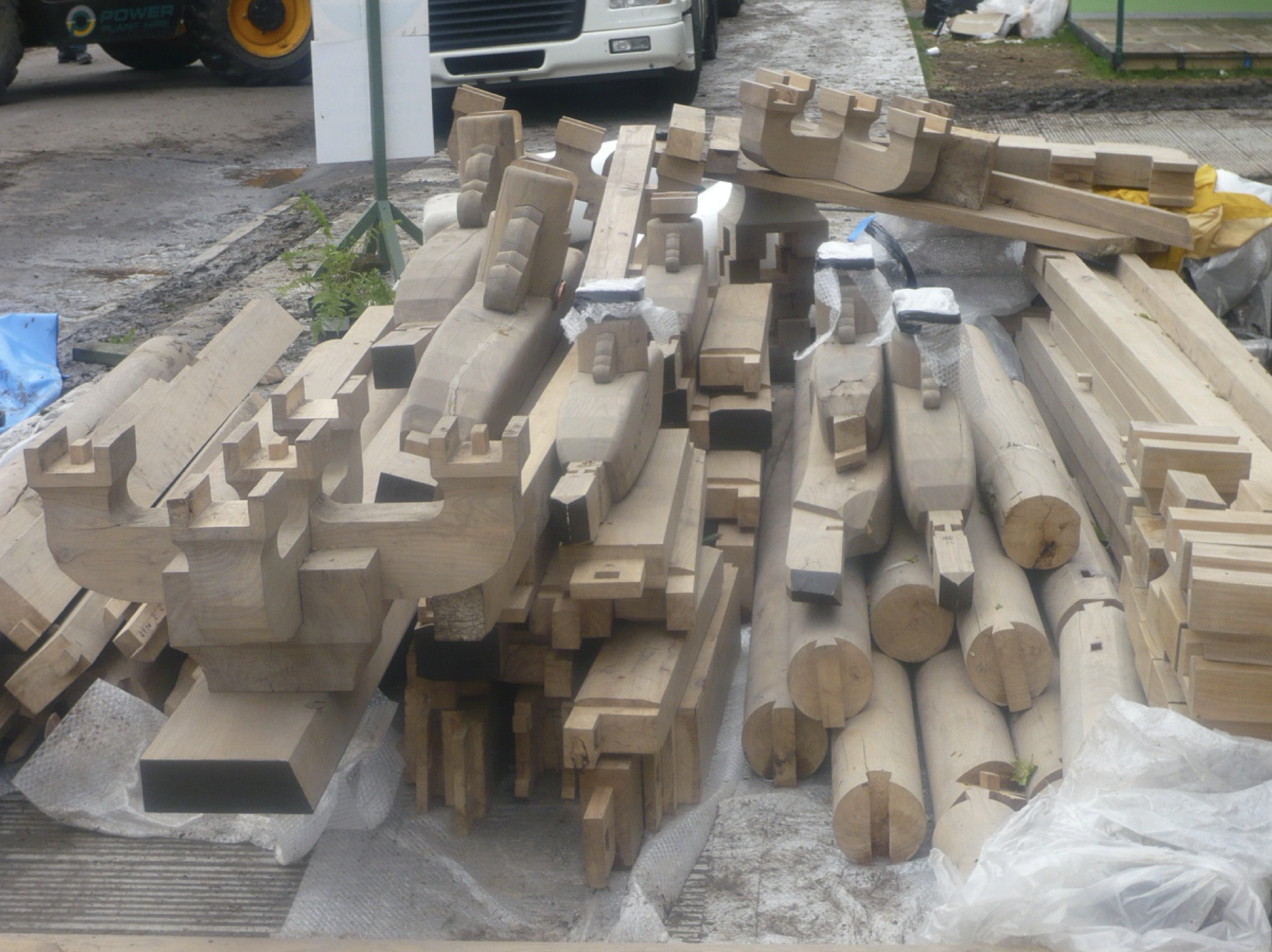
Hoisting of Pillars by Crane

Arrival of Plants
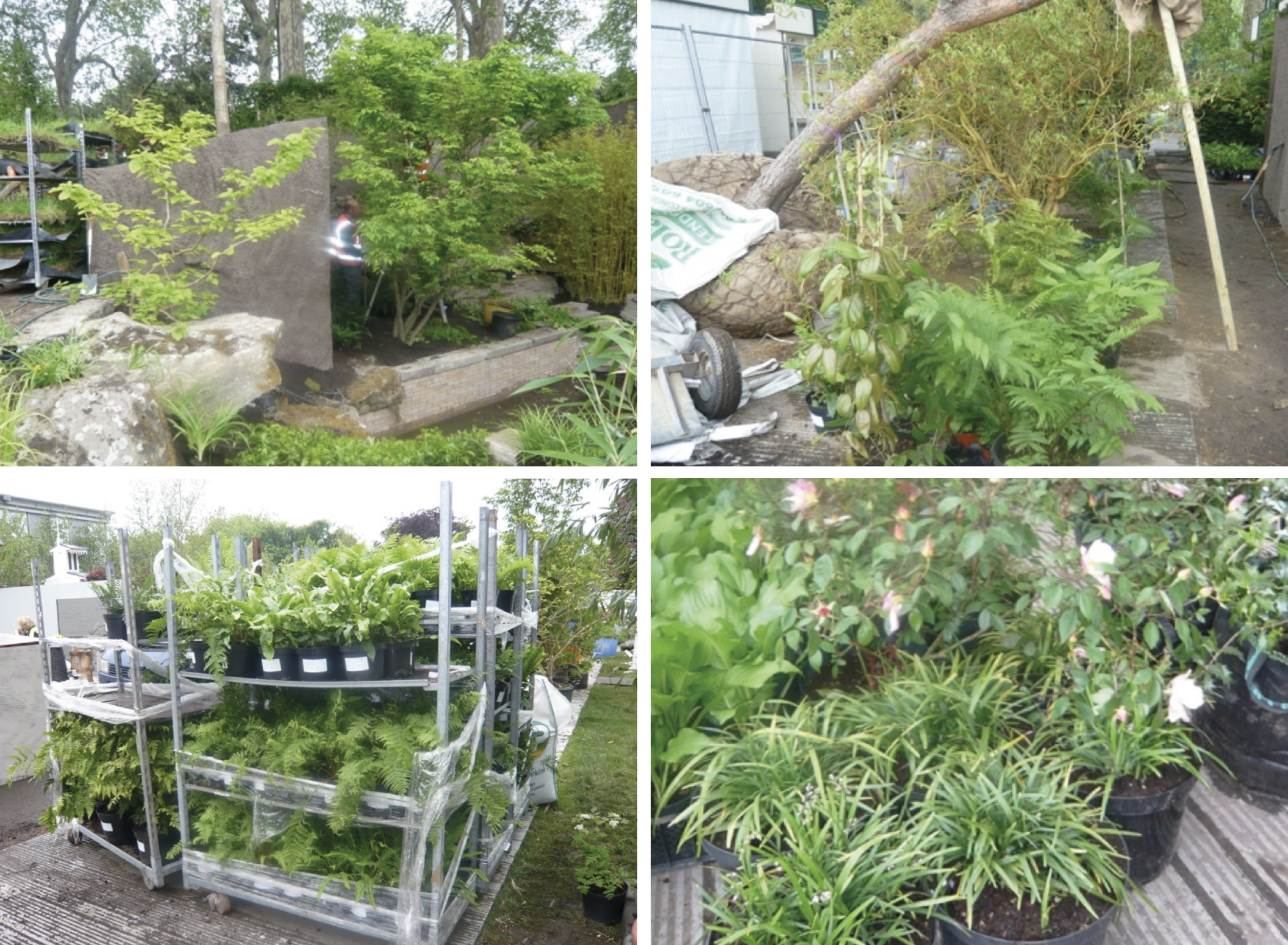
Arrival of the Rocks
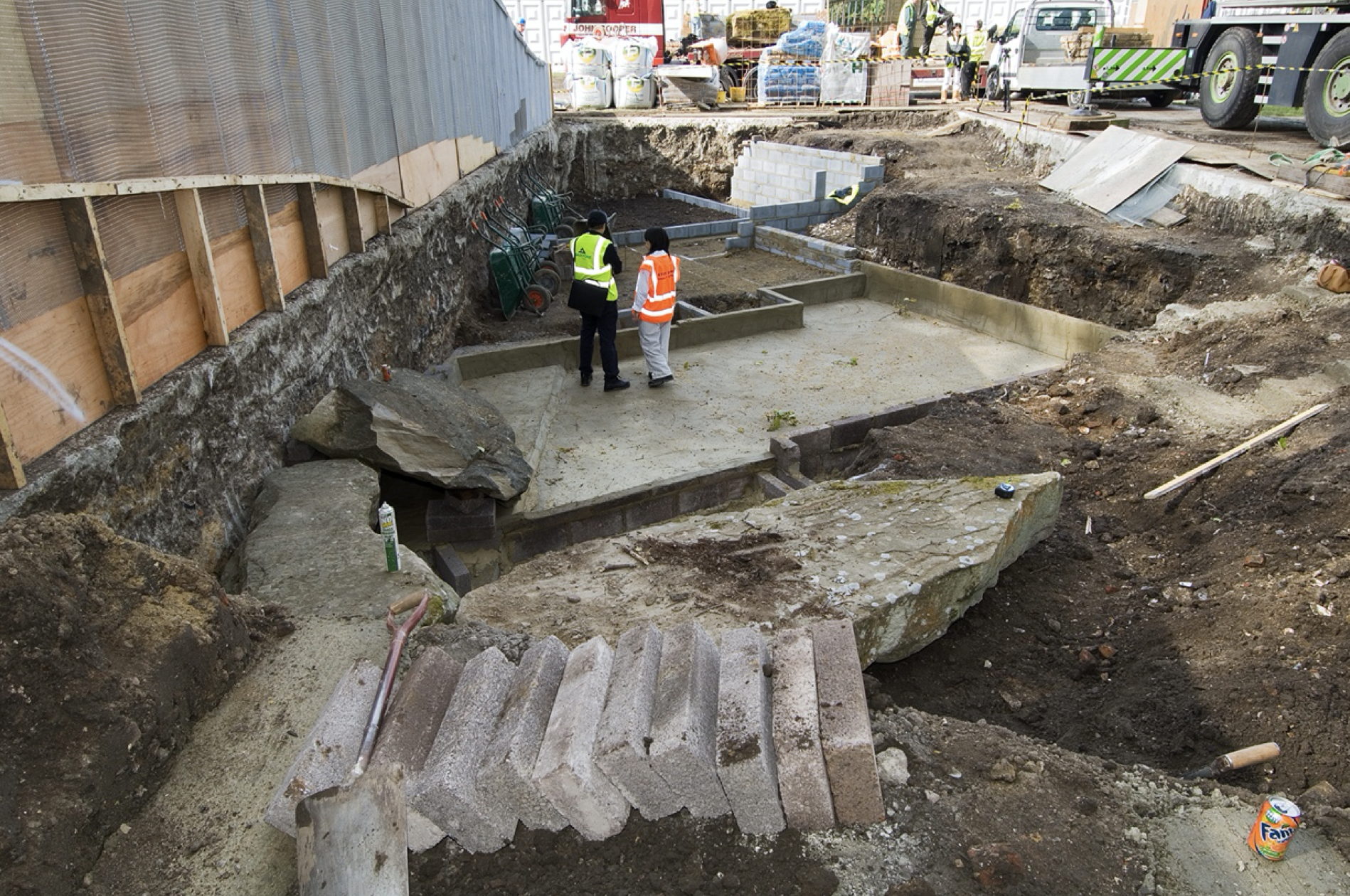
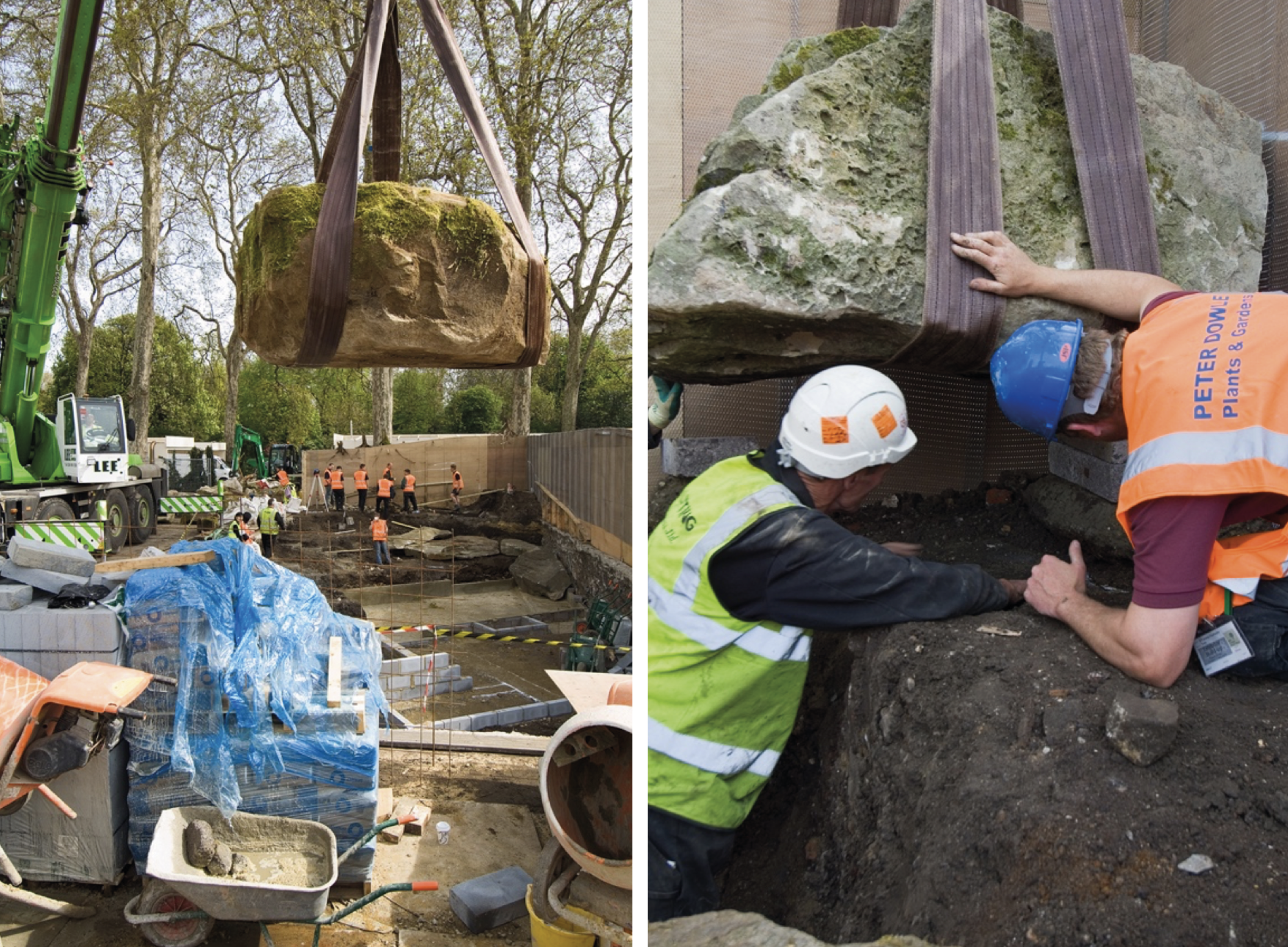
Shao Fan keeps a watchful eye on the precise placement of the boulders.
Building the Site/Garden with Precision and Accuracy
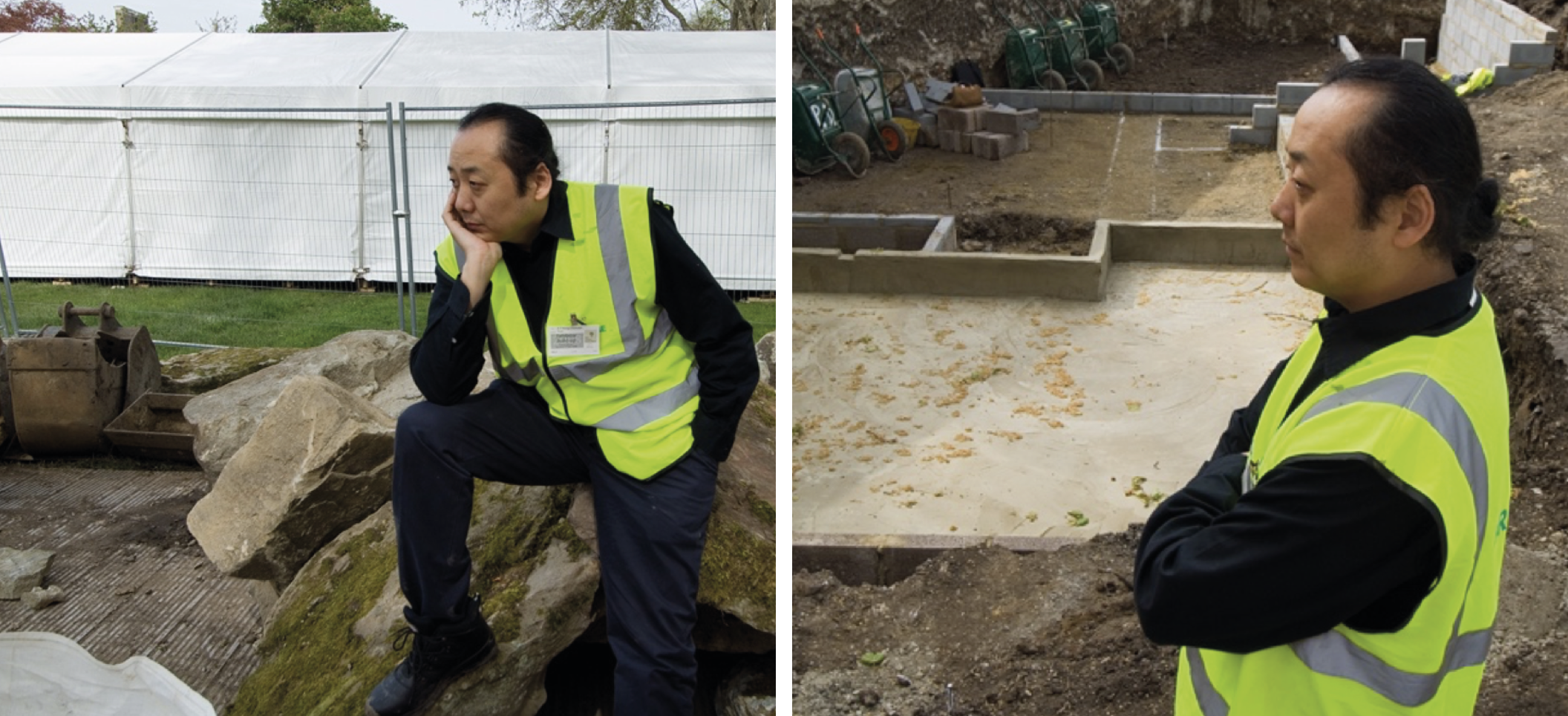
Carefully monitored by Shao Fan.

Sarah Eberle, Shao Fan, and Anna watch and instruct the construction team.
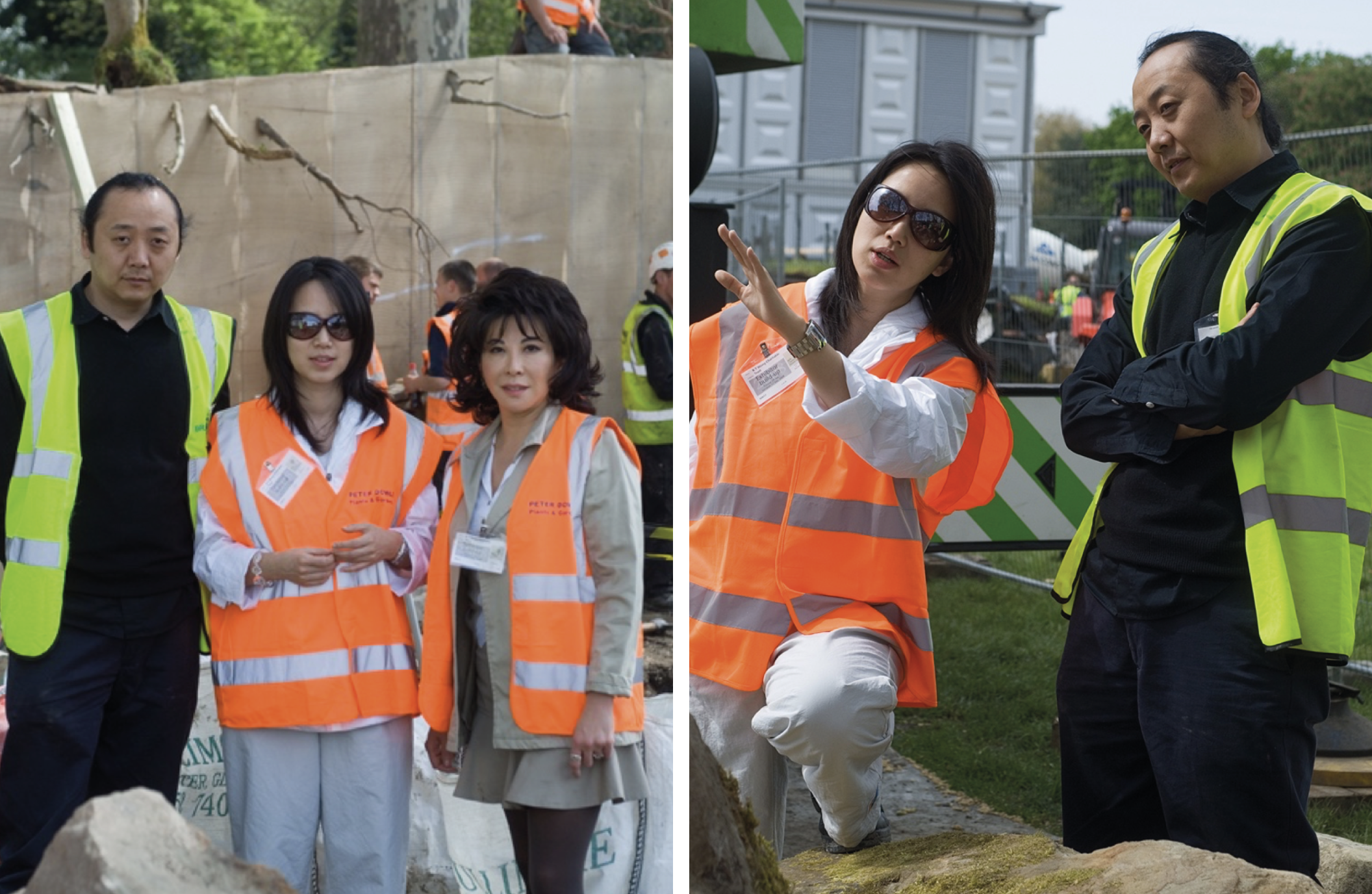
Shao Fan, Anna and Lady Davies.
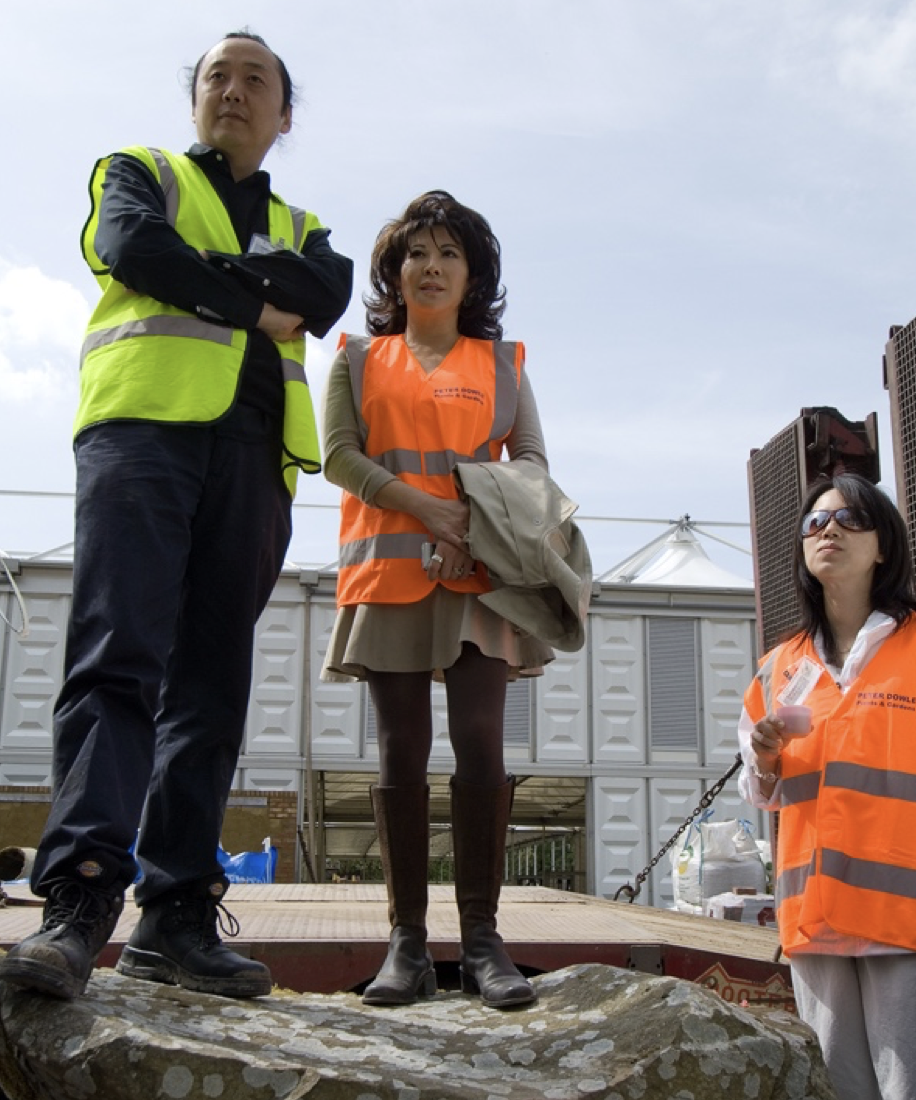
On top of the World!
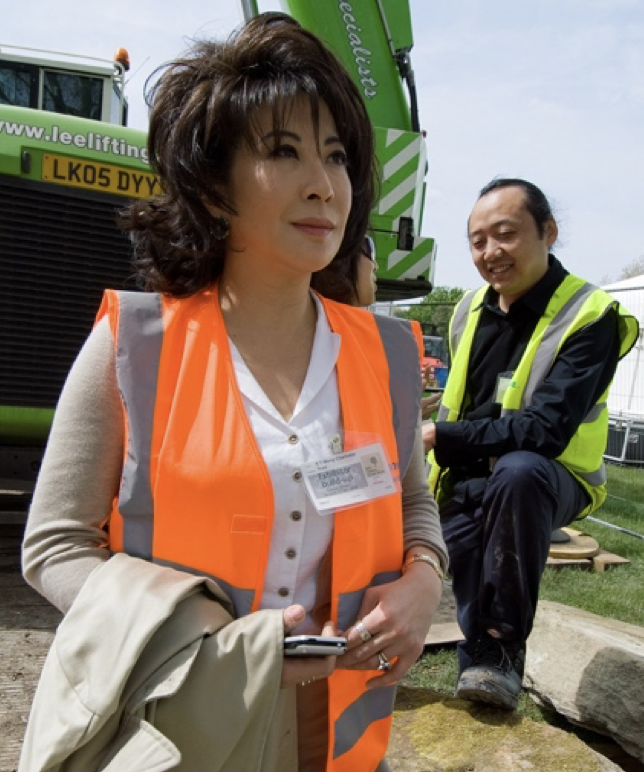
“I can’t believe I am doing this”

